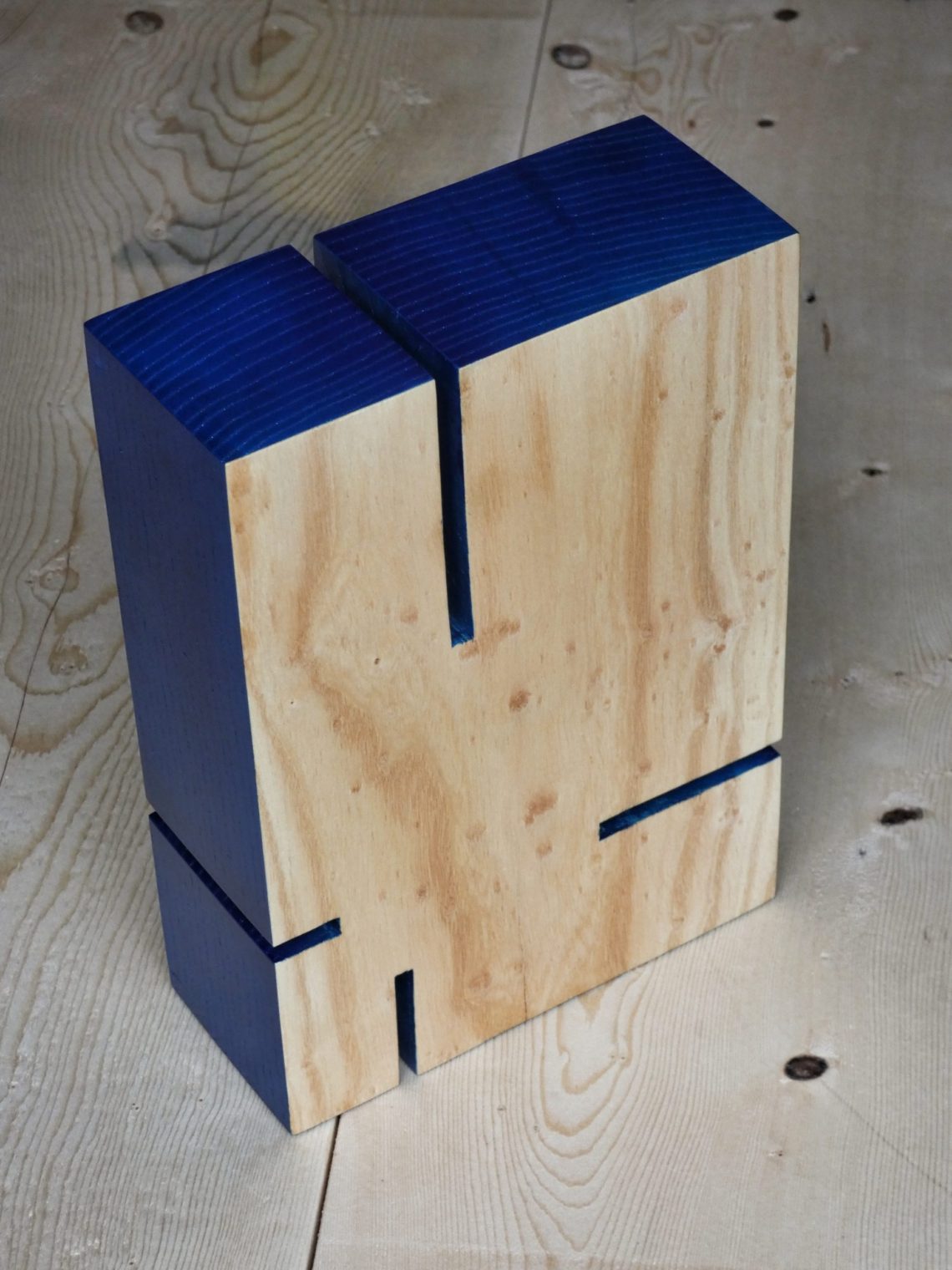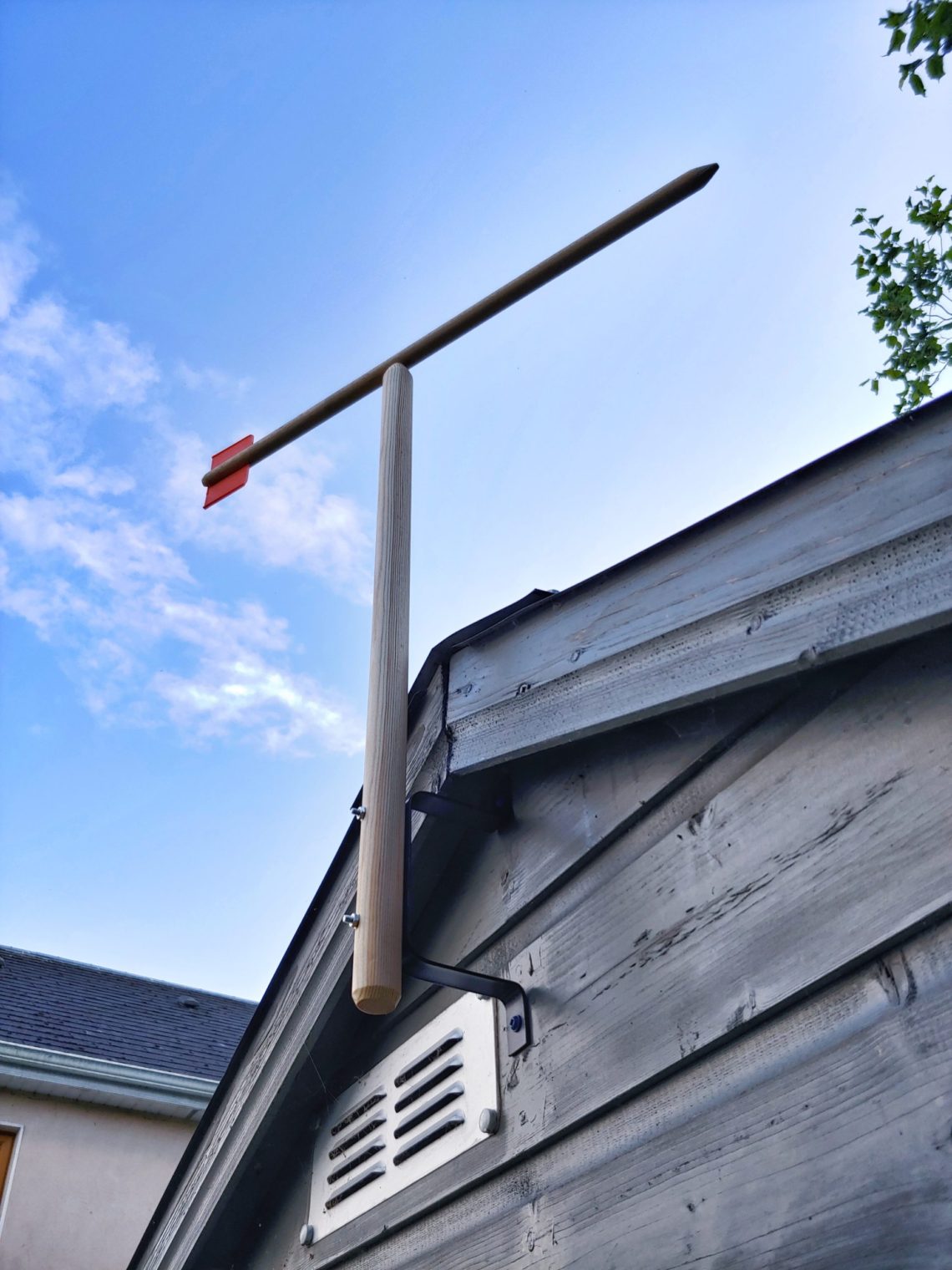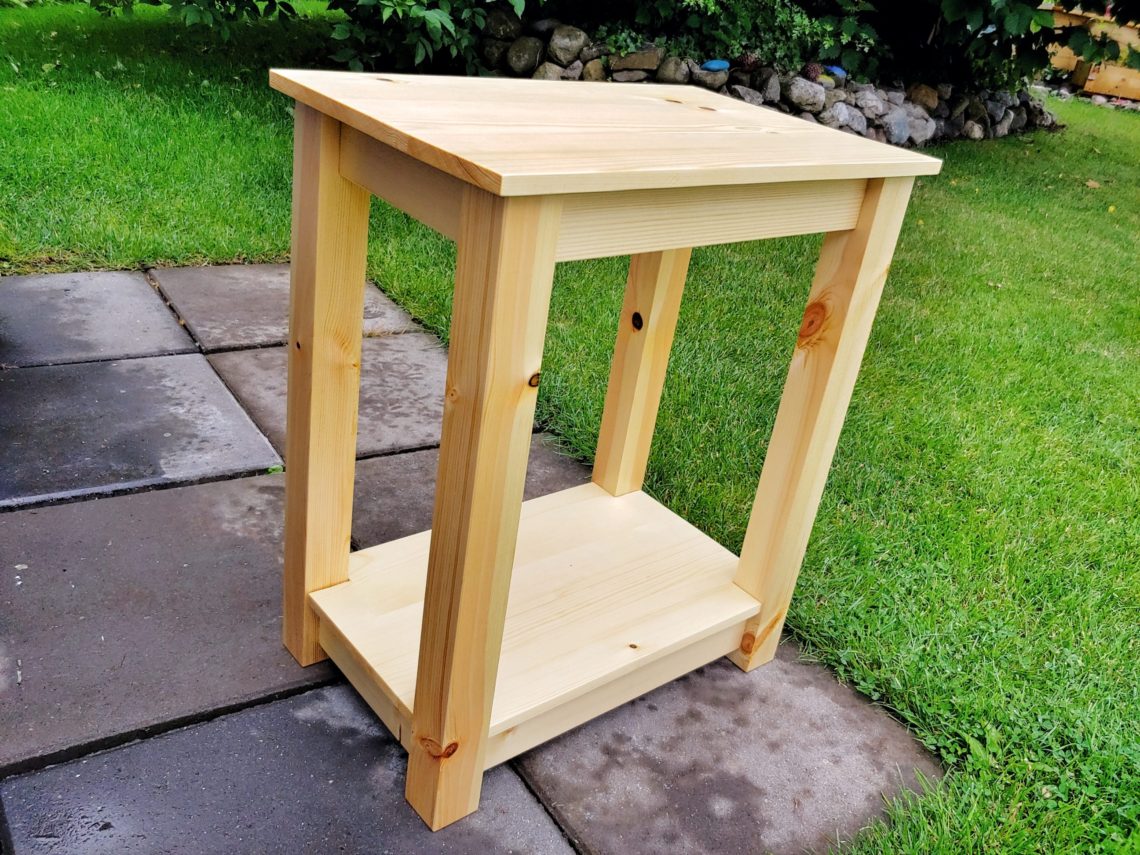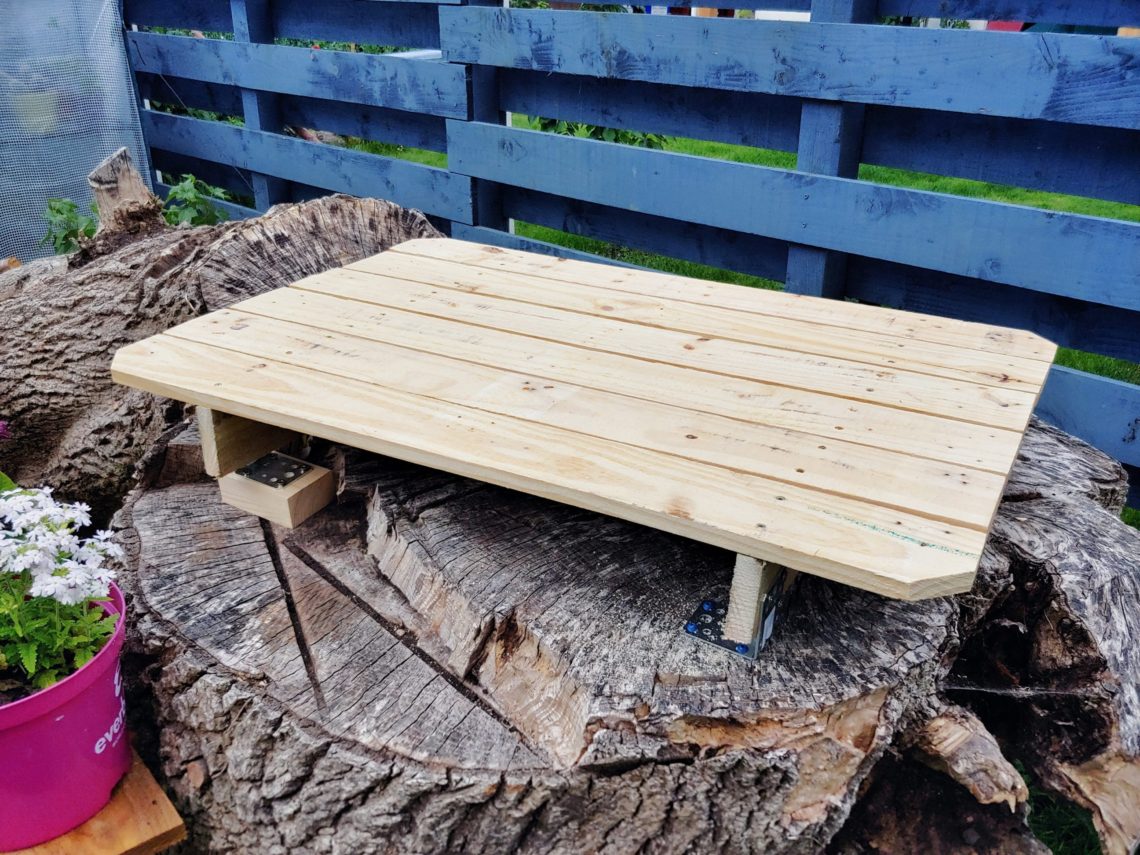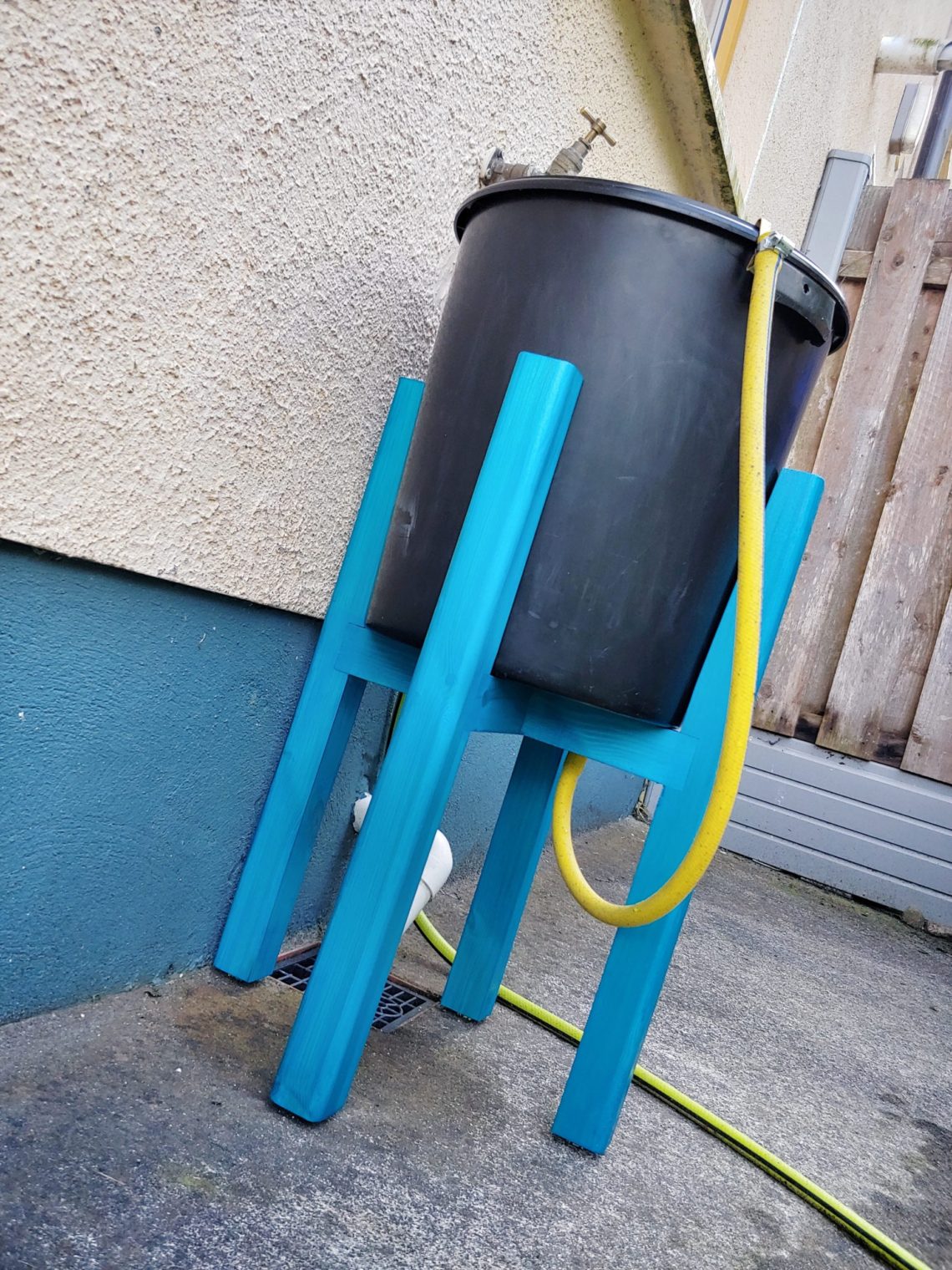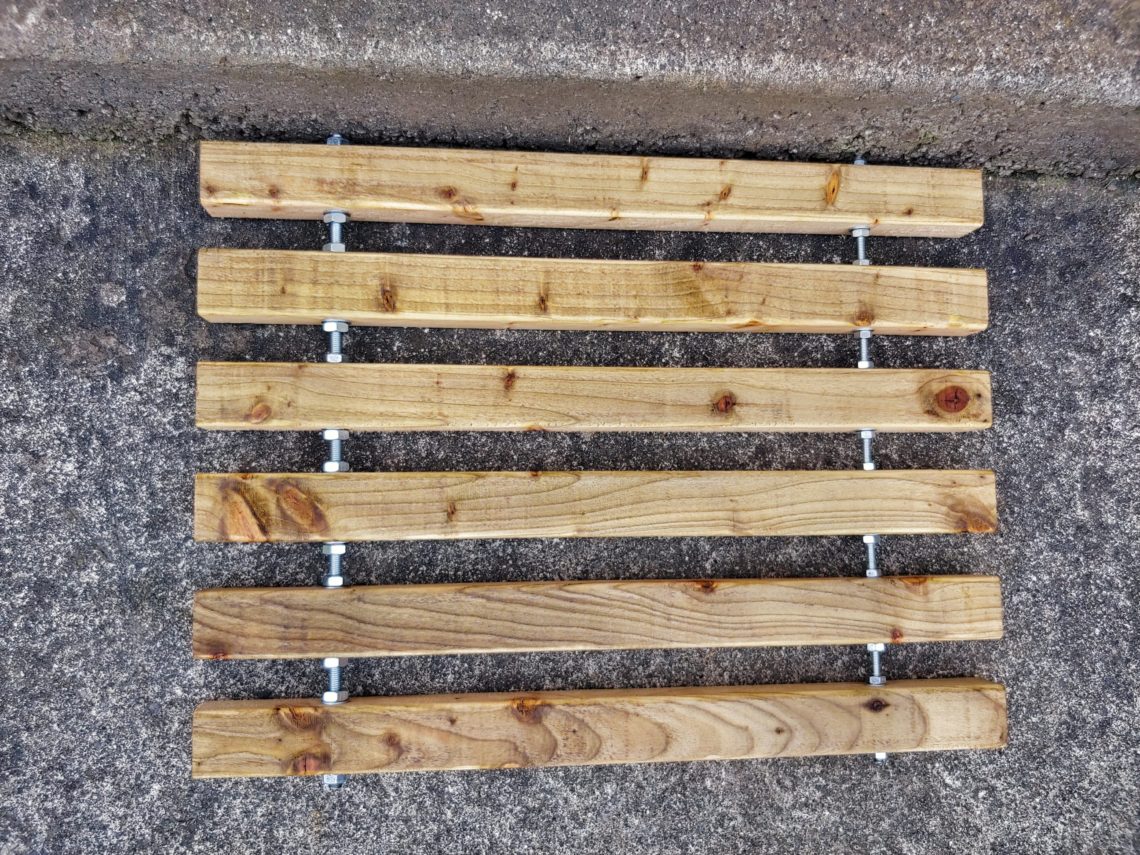-
2-4-6-8 block
It’s a replica of a project I viewed recently in an online art gallery, the original one was made of concrete, and it was quite expensive to buy. I used different materials and also painted all 4 sides and the back. The way I see this piece of art determined the name I made up for my clone, the notches I cut were 2, 4, 6 and 8 cm long. My version is made of ash wood, and it’s already served as a simple mobile tray. I removed castors and gave it a second if not the 3rd, life. Even…
-
Simple weathervane
It’s made of scrap dowels, a scrap metal handle and a toolbox divider. If there was a need to cut wood, I used a hand saw. The arrow was built first and tested for a couple of weeks, using a temporary stand. It worked great, and I decided to make a proper mount for it. Coincidentally, I had some scrap metal handles lying around that I no longer needed for the device they came from. They were used for the mount. Surprisingly, my chamfering bit turned out good for wood and metal, and it saved me some time in part…
-
2-tier bedside table
The timber that I selected for the top and the shelf wasn’t high quality, the boards were cupped and full of loose knots. That had to be worked out somehow. On the other hand, the timber used for legs, apron and lower shelf support was good to go straight away. The only joinery used in this project was butt joints reinforced with dowels. Simple to do and strong enough. I started with rip-cutting boards in half, that way I visually removed some cup and stiffened up the boards crosswise of the grain for the thickness planer. Wide, cupped boards have…
-
Tree stump platform
A quick project that took just over an hour to complete, and was rather spontaneous than planned. The materials I used were pallet wood for the top, scrap pressure-treated wood for the beams and a single piece of scrap, kiln-dried timber for the levelling block. I cut everything with a hand saw, and most of the alignment and spacing were simply eye-balled. The 4 corner brackets, I used, were galvanised, heavy-duty and long-lasting products. I’ve used them in my other outdoor projects, and they last years, absolutely rust-free. This construction is something between a tree platform, decking, a shelf and…
-
Fruit crate
This project is a classic approach to making crates, just a couple of boards, simple joinery and a quick finish. These crates are widely used for storing fruits, but not only. A traditional look was something I needed for this project, nothing over-engineered and easy to make. I made a couple of mistakes during this build, but I fixed them all. That makes me even more satisfied because making and fixing things needs more skills than just making alone. I had a couple of cupped boards lying around, and they seemed to be perfect for this project. I had to…
-
Garden sink
A plastic bucket, a short piece of garden hose and a wooden base create a garden sink, a thing that I urgently needed to stop wasting water. Plumbing and woodworking skills were used to make this project. Preparing the bucket was more challenging than the woodworking part, as plumbing isn’t my favourite thing, and usually, I don’t know exactly what I’m doing. On the other hand, all the wood joints I was going to cut were previously used and tested in the other project (a plant stand), so I had a clear idea of what to do. This sink was…
-
Ammo box
I’ve always wanted to make one of these, they have a classic, timeless look and can be used for anything. The bottom of this box is attached flat to the sides, using screws. I’ve never liked that and most of my projects use a different approach – bottoms are secured from the sides or rest on rails. This box, however, is a replica of many other projects and if that works for other people including the Army – it’ll work for me too. Most of the screws used in this box don’t go into end grain – it’s usually edge…
-
Toilet sign
Using a scroll saw was never easy for me. I find it complicated and tricky, but I don’t give up and do some practising from time to time. MDF scraps seem to be the best for this purpose. I printed out a template and fixed it on the board with contact adhesive. It’s always easy to peel it off after use. Following the line, on my scroll saw, was the most challenging part. I have already learned that drilling holes for the blade has to be done from the other side, just to keep the backside flat and easy to…
-
Wooden doormat
It’s nice to have a doormat, especially at the back door, where some mud can be carried into the house from the garden. It creates a barrier between the wet and dry surfaces. Hardwood would be ideal for this project, but I only had some pressure-treated softwood on hand. Also, some decking stain could be the best finish for this, but again – I used what I had. It’s OK to do some experiments from time to time, am I right? I started by ripping the 2×3 in half and cutting to length 6 equal pieces. The only trick I…
-
Large planter
I liked the look of the small rustic planter and simply couldn’t resist making another one, bigger and probably stronger too. Same as the small one, this one too is built of 1x7s, I also ripped some 2x3s in half for the legs and the bottom rails. I used screws instead of nails and drainage slots instead of drilled holes. Very heavy and deep box, ideal for plants with longer roots. It’s supposed to last 3 years, maybe longer. The first thing to do was to rip the 2x3s in half and next cut them to length. Then I cut…
